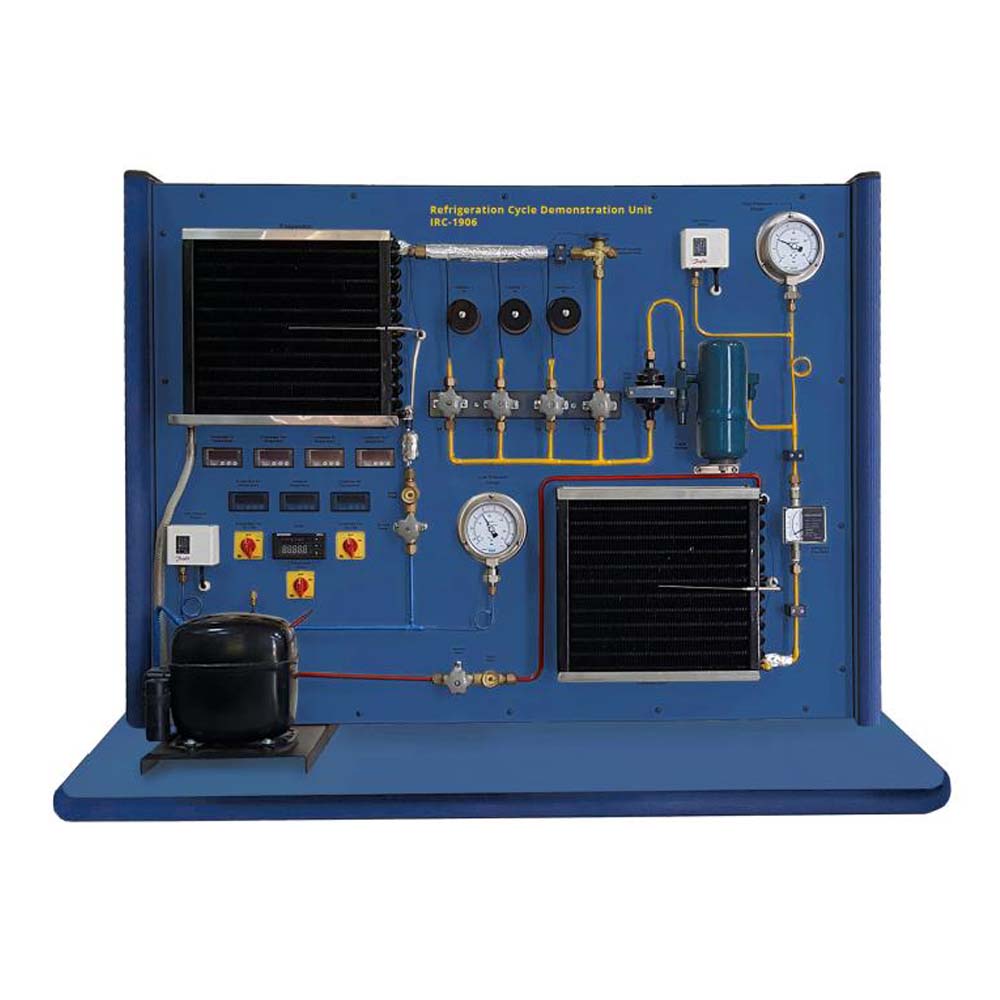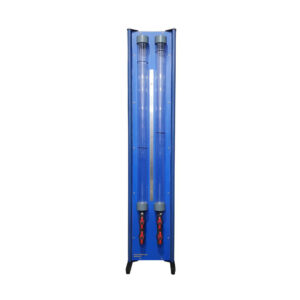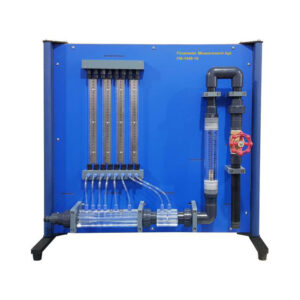The refrigeration cycle demonstration unit consisting of a hermetic compressor, condenser, evaporator and expansion element. Finned tube heat exchangers were used in the design of the evaporator and condenser. As comparison of expansion elements, consider three capillary tubes of various lengths and a thermostatic expansion valve. A refrigerant receiver is included with the trainer. Refrigerant can be added to or taken out of the refrigeration circuit via the receiver. This makes it possible to study the impacts of overfilling or underfilling the system. A flow meter is used to measure the refrigerant’s flow rate. Sensors keep track of the temperature, pressure, and electrical usage of the compressor in the refrigeration circuit. Digital displays allow for the reading of the measured values. Additionally, using data capture software, the measured values can be sent straight to a PC via USB at the same time (optional). The p-h diagram in the software allows users to dynamically view parameter changes in the refrigeration circuit (optional).
Software IRC-1906SW (Optional)
DAQ software specially designed in National Instrument™, LABVIEW™ environment to measure and calculate the results of apparatus. The software is optional and while using software a set of electronic sensors are included. Software can be run with any Windows™ environment




